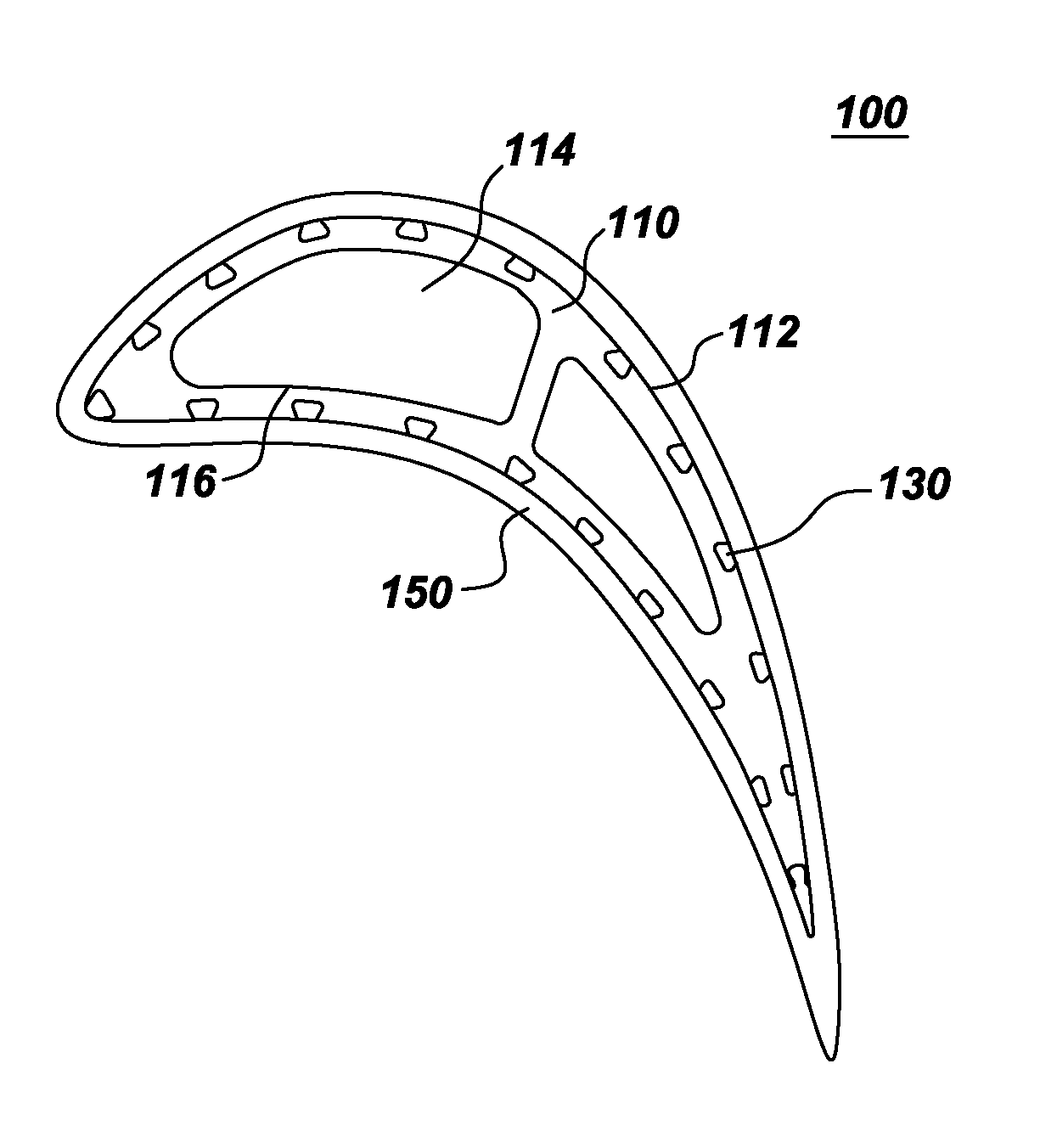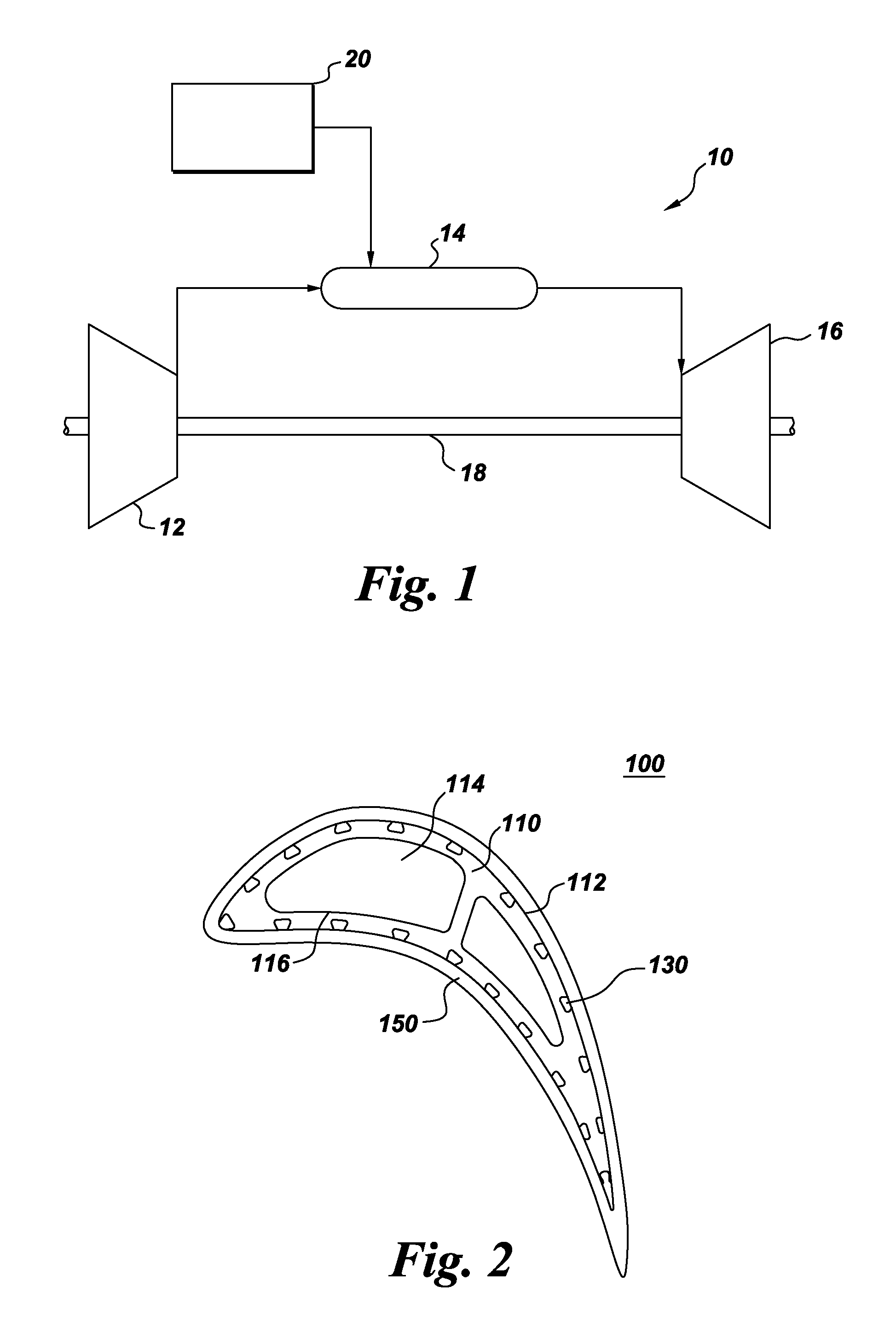Components with re-entrant shaped cooling channels and methods of manufacture
a cooling channel and component technology, applied in the direction of machines/engines, lighting and heating apparatus, forging/pressing/hammering apparatus, etc., can solve the problems of low heat transfer rate, reduced engine efficiency, and non-uniform component temperature profiles
- Summary
- Abstract
- Description
- Claims
- Application Information
AI Technical Summary
Benefits of technology
Problems solved by technology
Method used
Image
Examples
Embodiment Construction
[0028]The terms “first,”“second,” and the like, herein do not denote any order, quantity, or importance, but rather are used to distinguish one element from another. The terms “a” and “an” herein do not denote a limitation of quantity, but rather denote the presence of at least one of the referenced items. The modifier “about” used in connection with a quantity is inclusive of the stated value, and has the meaning dictated by context, (e.g., includes the degree of error associated with measurement of the particular quantity). In addition, the term “combination” is inclusive of blends, mixtures, alloys, reaction products, and the like.
[0029]Moreover, in this specification, the suffix “(s)” is usually intended to include both the singular and the plural of the term that it modifies, thereby including one or more of that term (e.g., “the passage hole” may include one or more passage holes, unless otherwise specified). Reference throughout the specification to “one embodiment,”“another ...
PUM
| Property | Measurement | Unit |
|---|---|---|
| widths | aaaaa | aaaaa |
| depths | aaaaa | aaaaa |
| pressure | aaaaa | aaaaa |
Abstract
Description
Claims
Application Information
 Login to View More
Login to View More - R&D
- Intellectual Property
- Life Sciences
- Materials
- Tech Scout
- Unparalleled Data Quality
- Higher Quality Content
- 60% Fewer Hallucinations
Browse by: Latest US Patents, China's latest patents, Technical Efficacy Thesaurus, Application Domain, Technology Topic, Popular Technical Reports.
© 2025 PatSnap. All rights reserved.Legal|Privacy policy|Modern Slavery Act Transparency Statement|Sitemap|About US| Contact US: help@patsnap.com



